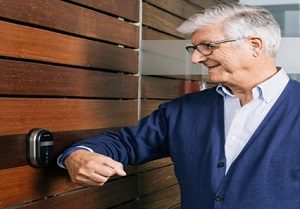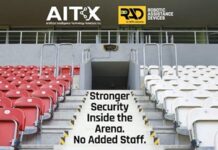
Smartair battery-powered wireless locks offer modern, easy, cost-effective installation, alongside features designed to put care home managers in more control of their premises, and are already deployed in residential care settings across Europe. To assist in the care of over 500 residents, Pamplona’s Casa de la Misericordia demanded a new access system that offered real-time control over the premises. The choice was Smartair Wireless Online.
Care homes present many unique security challenges. Above all, a residence needs to feel like an open, welcoming space. It must work for the resident, and provide a pleasant environment to greet family and other visitors. It should be a home, in every sense.
At the same time, managers must ensure security of the site, including its staff, sensitive data, and areas where medicines are kept. If there has been an unauthorised access attempt, staff need to know as soon as possible. When residents have dementia or other complex conditions, it is crucial that care workers can find out where they are at any time.
Advanced access control — that is easy for everyone to operate — can have major benefits in a care home. A system that can feed back to site managers in real time, for example, can directly impact quality of care, enabling staff to quickly locate residents, to respond to incidents or problems as soon as they arise, and to organise staff workflows more efficiently, resulting in less staff time wasted handling keys.
“In a residence like ours it is critical to have real-time management that allows us to interact with a door at any time,” explains Ernesto Serra, Facility Manager at Casa de la Misericordia.
The system had to be expandable, so it could be installed in 2 phases, starting with a new-build before moving on to a 1930s building. Advanced wireless technology suited to retrofitting an old building was a must-have: the older building has walls up to 1m thick.
“A wireless solution that allows us to install access control without wiring up the buildings is a big advantage,” adds Ernesto Serra.
The new system needed to be scalable, so staff could manage access to the 2 buildings from the same control point, amend access rights instantly, and tailor access privileges to the diverse profiles of staff, residents, volunteers, visitors and emergency workers. The 2-stage project is now complete, and includes 650 additional Smartair-enabled doors in the old building.











